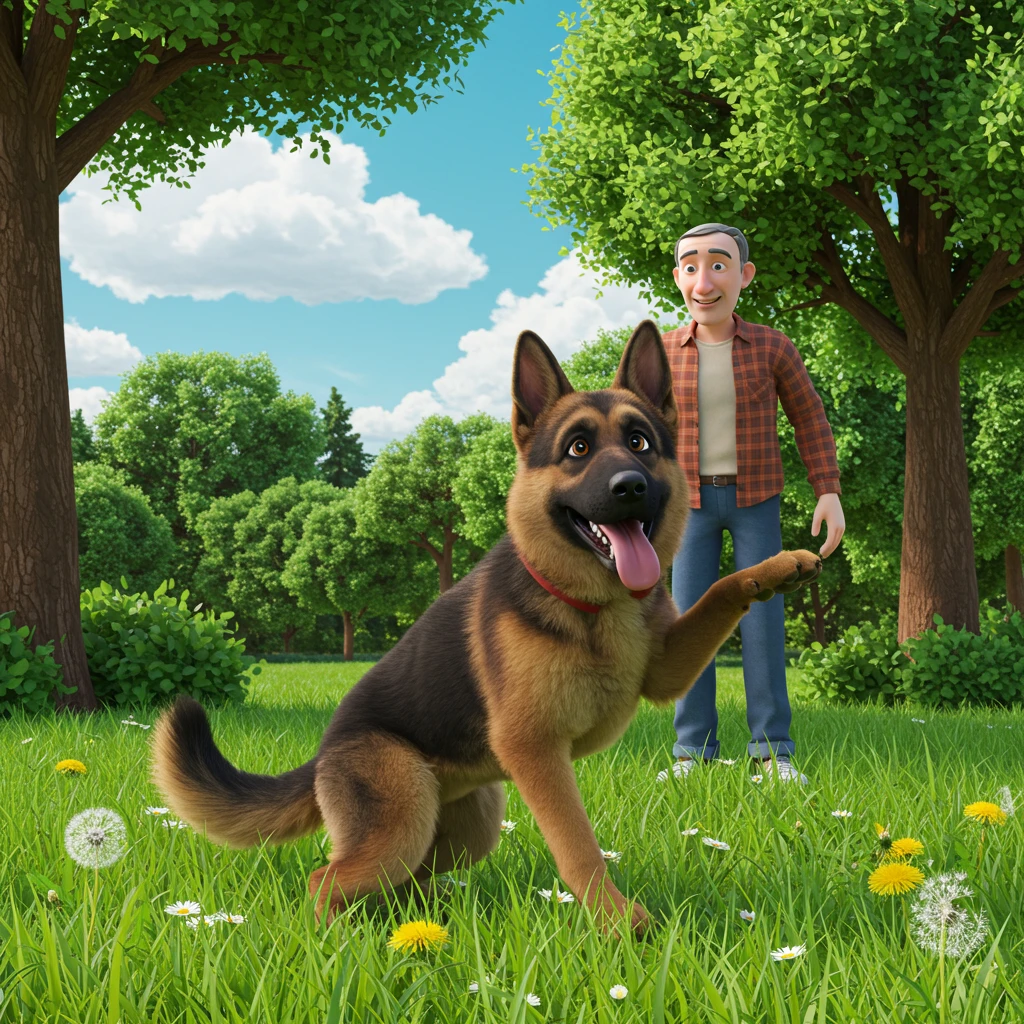Observing your dog stumbling can be concerning. This behavior can range from a slight imbalance to a complete inability to walk normally. Understanding the reasons behind this phenomenon is essential to ensure your four-legged companion’s health and well-being. In this article, we’ll explore the various possible causes of stumbling in dogs, associated symptoms, the best diagnostic methods, and the steps to take to get appropriate treatment.
Possible Causes of Stumbling in Dogs
1. Neurological Problems
Neurological disorders are one of the most common causes of stumbling in dogs. These problems can affect the brain, spinal cord, or peripheral nerves.
Examples:
- Encephalitis: Inflammation of the brain that can be caused by viral or bacterial infections.
- Brain tumors: Tumors can put pressure on brain regions responsible for balance.
2. Vestibular Problems
The vestibular system, located in the inner ear, is responsible for balance. Problems in this system can cause uncoordinated movements.
Examples:
- Vestibular disease: A common disease in older dogs, often caused by ear infections or metabolic disorders.
- Trauma: Head injuries can damage the vestibular system.
3. Musculoskeletal Disorders
Problems affecting muscles, joints, or bones can also lead to stumbling.
Examples:
- Arthritis: Inflammation of the joints that can cause pain and an unstable gait.
- Hip dysplasia: A malformation of the hip joint that leads to mobility problems.
4. Intoxications
Certain poisons can affect the nervous system and cause symptoms of imbalance.
Examples:
- Chocolate ingestion: Contains theobromine, which is toxic to dogs.
- Toxic plants: Certain indoor and outdoor plants can cause neurological reactions.
5. Metabolic Problems
Conditions such as hypoglycemia (low blood sugar) or hypercalcemia (high blood calcium) can also affect coordination.
Examples:
- Diabetes: Improper management of diabetes can lead to hypoglycemia, causing trembling and imbalance.
- Liver diseases: Liver disorders can lead to a buildup of toxins in the blood.
Associated Symptoms
It’s crucial to pay attention to other symptoms that may accompany stumbling to better identify the underlying cause. These symptoms include:
- Vomiting
- Frequent falls
- Difficulty getting up
- Lack of appetite
- Apathetic behavior
- Tremors
Diagnosis
1. Veterinary Consultation
The first step to diagnosing the cause of stumbling is to consult a veterinarian. They will perform a comprehensive physical examination and ask about your dog’s medical history.
2. Diagnostic Tests
The veterinarian may recommend several tests to determine the cause of stumbling:
- Blood tests: To check glucose levels, electrolytes, and liver enzymes.
- X-rays: To examine the condition of bones and joints.
- Ultrasound: To evaluate internal organs.
- MRI or CT scan: To obtain detailed images of the brain and spinal cord.
3. Home Observation
It’s also helpful to observe your dog at home for changes in their behavior, appetite, and sleep patterns. This can provide valuable information to the veterinarian.
Steps to Take if Your Dog is Stumbling
1. Don’t Panic
Stumbling can be alarming, but it’s important to stay calm. Evaluating other symptoms and your dog’s general behavior can help you determine the severity of the situation.
2. Limit Movement
If your dog is stumbling, limit their movements to prevent additional accidents, such as falls or injuries.
3. Note Symptoms
Make a note of all observed symptoms, including the duration of the stumbling, the circumstances under which it occurs, and any changes in your dog’s behavior.
4. Contact a Veterinarian
If the stumbling persists or is accompanied by other concerning symptoms, contact your veterinarian immediately. Early intervention can make a big difference in your pet’s treatment.
Key Points and Best Practices
- Monitor your dog closely: Regular monitoring of your dog’s health can help detect problems early.
- Educate yourself on symptoms: Knowing the warning signs of an illness can help you act quickly.
- Follow veterinary recommendations: Adhere to the advice and treatment prescribed by your veterinarian to ensure your dog’s recovery.
- Avoid self-diagnosis: Do not attempt to diagnose your dog yourself, as this could delay appropriate treatment.
Conclusion
Stumbling in dogs can have many causes, ranging from neurological problems to intoxications. Rapidly identifying the underlying cause is essential to ensure your pet’s health. By remaining vigilant and consulting a veterinarian as soon as you notice changes in your dog’s behavior, you can ensure an early diagnosis and effective treatment. Remember that your veterinarian is your best ally in maintaining your four-legged companion’s health.
Have you noticed any other symptoms accompanying your dog’s stumbling that you would like to discuss further?







